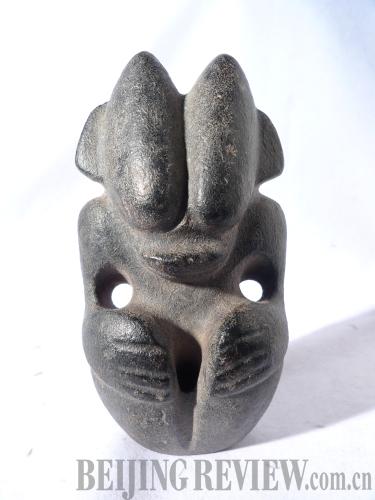|
 |
|
A black jade statuette with animal head and human body (COURTESY OF ZHANG YIPING) |
Hongshan Culture
Hongshan Culture remains were first found in Chifeng, Inner Mongolia Autonomous Region, in north China, by archeologists in the 1920s. Chinese scholars in 1954 named these remains, dating from the Neolithic Age, Hongshan Culture. Hongshan means red mountain in Chinese.
Chinese archeologists have unearthed nearly 1,000 pieces of Hongshan Culture relics in the area since the 1970s. These have been radiocarbon dated back to between 3,000 B.C. and 4,000 B.C. Based on research, the Hongshan people survived mainly via agriculture and animal husbandry, being additionally capable of making microlithic tools and pottery as well as mastering bronze smelting technology.
What is more, the Hongshan Culture also revealed craftsmanship in jade sculpture. Most such work found over time resembles figures, animals, including pigs, turtles, birds, cicada and fish, as well as imaginary totem creatures. As assumed by archeologists, these statuettes were used as sacrificial vessels in various religious ceremonies and rites. Chifeng also boasted a rich resource of jade stone. |
